Photo


A Crusade of a Different Color
On this day in in 1095, Pope Urban II called all Christians in Europe to war against Muslims and regain the Holy Land, beginning the first of nine crusades. Two Chicago Public School teachers/Fund for Teachers Fellows have set out on a related, conciliatory quest rooted in culture. We share their student impact below...
Sounds of clay drums filled the air as visitors strolled among stalls of Islamic art, stopping to have their names written in Arabic. A storyteller shared tales of adventure in one corner as craftsmen carved woodblock animals in another. The musicians, calligraphers, storytellers and artisans weren’t occupying a Moroccan souk, but rather an Arabic Fine Arts Night in the cafeteria of an urban Chicago elementary school.

Earlier that year, art teacher Shana Pearlmutter (Bell Elementary) and Arabic teacher, Mohamed Danja (Lane Tech College Prep) documented with a Fund for Teachers grant the effects of tourism, global development and poverty on the ancient culture of Morocco. Shana’s students recreated art forms researched on her fellowship and both Shana and Mohamed’s students crafted personal biographies to exchange with young women the teachers volunteered with in Marrakesh. Mohamed’s Arabic students continue to write pen pal letters with their Moroccan peer, with whom they also participate in a video conferencing/global awareness project.
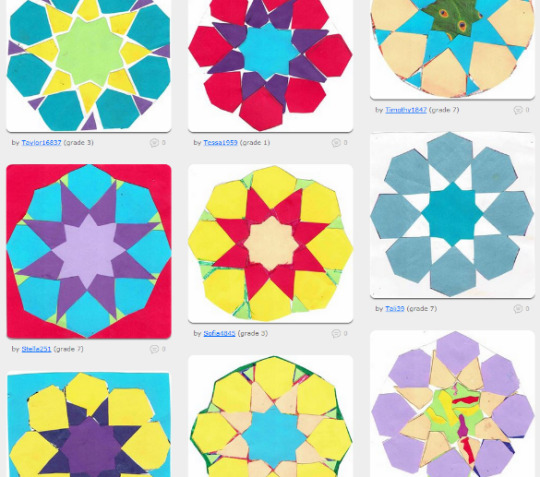
“Through relationships we forged during our fellowship in Morocco, we have now an international troop of artisans, students, teachers and collaborators dedicated to helping us promote a cross-cultural dialogue about society, stereotypes and prejudices between students in Marrakech and ours in Chicago,” said Shana.
View this slideshow of images from the Arabic Fine Arts Night.
Inspired by their new global literacy, eighth graders graduating from Bell Elementary decided to dedicate their school’s 100th birthday year to combating hunger and inequality as outlined in the United Nations Global Goals for Sustainability in 2030. Every K-8 student pledged to support the UN Global Goals and, on UN Global Buddy Day, partnered with peers from different grades to discuss their intentions for changing the world. Their written pledges eventually comprised a permanent “Change the World” mural.


“My experiences in Mr. Danja’s Arabic class were instrumental in my continuing to study the language in college,” said Seth Davis, a former Lane Tech Arabic student. “By making the Maghrebi culture part of the class and collaborating with the festival at Bell Elementary, he tied the teaching of language into the appreciation of culture. We were exposed to fantastic artists and craftspeople and I still listen to the music he introduced to me in class and at the Bell event.”
This winter, Bell Elementary and Lane Tech will host in Chicago a peer met in Marrakech, coming to shadow their classes and share with students more about life in a Muslim country.
“This work keeps me going,” said Shana. “I love making connections that build awareness and cultural bridges.”
To learn more about this fellowship, visit the blog Shana and Mohamed maintained for students to follow throughout the experience.
#Fund for Teachers#FFTFellows#Arabic#global lit#Morocco#Marrakech#marrakesh#multiculturalism#sschat#crusades#Maghrebi#Chicago Public Schools#profdev#teacherleader#teacher grant#teacher fellowship#k-12 education#edchat#education#artsed#world languages
1 note
·
View note
Photo





Happy Veteran’s Day!
In honor of our favorite veteran (and FFT founder, Raymond Plank) and all those who served, we proudly share several FFT Fellows' pursuit of learning that introduces the next generations to those who helped secured their freedom:
Chicago teacher Dan Lundak, who retraced his grandfather’s participation in the D-Day invasion to give students a personal story they can relate to when facing similar decisions about personal sacrifice;
Iraqi War veteran and FFT Fellow Scott Glew, whose research of the World Wars resulted in a new Global Studies course called Conflict & Cooperation;
Alabama teachers Tracy Boland and Tammy Guthery, who learned about Pearl Harbor from a 98-year-old survivor of the attack; and
Houston teacher Jeff Walker, whose documentation of “The Gipper” resulted in a published biography.
After graduating from Yale University in 1944 with a bachelor of arts degree, Raymond served with the U.S. Army Air Corps as a bomber pilot in the South Pacific Theater of Operations against Japan during World War II. Raymond compared his feelings for Fund for Teachers, which he founded in 2001, to standing on a hot Texas airstrip during World War II:
“It just makes me tingle with pride at being part of it,” he said. “I’ve always felt that teachers deserved considerably more recognition and respect. We need more balance in our society and you get that balance and added dimension by impacting teachers’ lives.”
Read this letter sent to Raymond from another FFT Fellow who researched our veterans’ sacrifice, thanking him for his service and for his legacy with Fund for Teachers.
#veteransday#veteran'sday#usma#goarmy#semperfi#pearl harbor#The Gipper#teacher leaders#teacher grant#teacher resources#teacher fellowship#SSchat#APUSH#fundforteachers#FFTFellow#education#military#duty#honor#profdev
2 notes
·
View notes
Photo

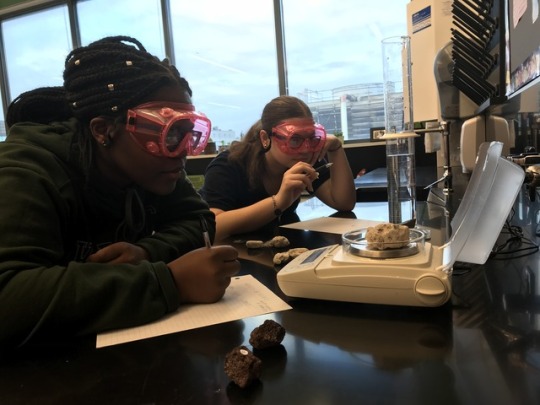
Per a proclamation by the United Nations, today is World Science Day for Peace & Development -- an apropos time to highlight the fellowship of Emily Hart, chemistry teacher at KIPP NYC College Prep High School in the Bronx.
The United Nations Educational, Scientific and Cultural Organization (UNESCO) celebrates this day in order "to underscore the role scientists play in broadening our understanding of the remarkable, fragile planet we call home and in making our societies more sustainable." Similarly, the focus of Emily's FFT fellowship was to study the debilitating effects of acid rain and other environmental factors on archaeological sites in Greece.
"I designed a fellowship to explore Greece's ancient archaeological sites and learn from experts in the field of conservation and restoration," said Emily. "These sites provide a unique opportunity to gain a deep understanding of the chemical processes behind the decomposition of these magnificent structures caused by environmental factors such as acid rain. The powerful combination of chemical change and historical relevance at these ancient sites is now capturing students' interest in chemistry as never before."
During her fellowship, Emily met with one of only 22 conservators on the Acropolis, learning in one of the small office buildings next to the Parthenon. She also secured a back stage visit through the collections and laboratories at the National Archaeological Museum in Athens, known to be the leader for conservation efforts of ancient Greek art and cultural pieces. To transfer her experiences to the classroom, Emily is planning to host an "Effort Olympics" simultaneous to the Winter Olympics in February. Students will display research and findings related to authentic experiences applying acid-based chemistry and be awarded medals in various categories.
"Students will be busy researching the composition of acid rain using the EPA website and investigating the chemical reaction of acid rain and limestone (the common component of Greek sites) through a multi-day lab activity." said Emily. "The plan is for them to then set up a simulation of decomposition using the scientific method to see in real time the effects of acid rain on calcite (a mineral that comprises limestone). In their conclusion, students will compare and contrast this chemical reaction to others we have discussed. Also, students will complete a comprehensive analysis citing data to explain how acid rain is an urgent problem and provide suggestions on what society should do about it. This lab report will assess students’ ability to complete scientific writing, using the evidence collected to explain a real world phenomena."
"I love how chemistry has the ability to explain different phenomena like acid rain and how something that we might think isn't important has the ability to change history and a person’s whole way of living," said Jasmine, one of Emily’s students. Another student, Maya, added: "I've always been interested in biochemistry, so the story how the site of Akrotiri was preserved is fascinating. I like learning about history and this project will be a cool way to combine my knowledge, getting the best of both worlds."
UNESCO would be so pleased to see this international day honored throughout the school year by Emily and her students!
#FFTFellow#fundforteachers#UNESCO#SciChat#United Nations#Susty#acid rain#art history#Greece#Ancient Greece#chemistry#APChem#environmental science#profdev#NSTA#World Science Day for Peace & Development
2 notes
·
View notes
Photo
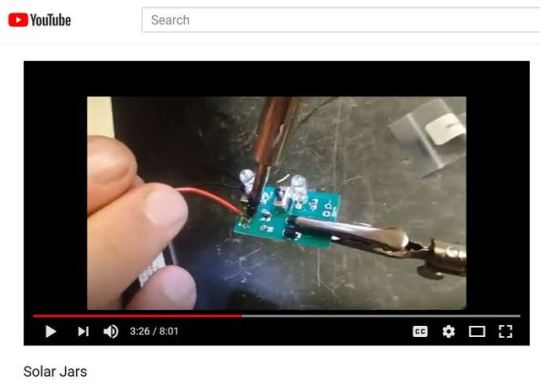

Lighting Up STEM Learning
Pam Ulicny’s students are capturing lightening in a bottle. Using solar energy kits and curriculum she created, students in the heart of coal country are bringing photovoltaic energy to peers around the world through online tutorials.
In 2013, Pam developed a STEM curriculum for her students to make solar powered lanterns using an upcycled glass or plastic jar. She then manufactured the lanterns as kits accompanied by lab manuals and supplemental activities, which she also wrote. Two years later on a Fund for Teachers fellowship, Pam introduced the project to impoverished youth in South Africa to help them learn STEM/business skills, increase hours of productivity, and eliminate fire hazards related to kerosene lanterns.
Building on Pam's experiences, her students at Tri-Valley Jr/Sr High in Hegins, PA, now serve as online ambassadors for alternative energy. They regularly host Skype sessions with classrooms across America, providing solar lantern construction tips and educational input for spinoff humanitarian projects. Internationally, students in South Africa, Mali and Nicaragua now build solar lanterns after watching instructional videos Pam's students research and produce.
“Working on the solar lantern project teaches us not only about solar energy and electricity, but it also helps us to understand the situations people in third world countries are dealing with and appreciate what we have more,” said one student.
The social business enterprise Pam developed to empower South African youth continues to grow, as well. Kwelanga Solar recently hosted its first Cape Town workshop, combining construction of solar lanterns with an English class around the theme of peace. Pam helped secure a $10,000 grant to cover hard costs associated with supplies.
“My fellowship learning in STEM applications, social entrepreneurship and sustainability efforts now impacts students in four countries,” said Pam. “Fund for Teachers helped me accomplish my mission as a teacher: To do the most good and give my students the best tools to succeed.”
For more information on Pam’s fellowship, visit the blog she maintained throughout her time in South Africa.
#FFTFellow#fundforteachers#STEM#solar lanterns#profdev#teacherlearning#teacherleader#teacherleadership#susty#alternative energy#Kwelanga Solar#South Africa#SciChat#NSTA
0 notes
Photo


FFT Fellow Receives EL Education's Highest Honor
Congratulations to Lindsay Slabich, founding teacher at the Springfield Renaissance School in Springfield, MA, who just received EL Education's 2017 Klingenstein Teacher Award and its $5,000 cash prize.
Voted on by peers within EL Education's national network of schools, the Klingenstein Award is given to the teacher who most successfully transmitted to students the essence of EL Education culture, building exemplary character, driving outstanding academic achievement, and instilling an ethic of “citizen scholarship.”
In 2008, Lindsay, along with two peers, designed a Fund for Teachers fellowship to research the Ladakhi society in India concerning their efforts to balance globalization with preservation of culture and resources. The teaching team's insight into their experiences align beautifully with the award's criterion:
"As we experienced a fascinating cultural exchange, and grew individually, we also expanded our thinking about development. We began to ask more and more questions. What makes development sustainable? Whose responsibility is development? What role should local Ladakhis play in deciding how their society develops in the context of a globalized world? What about local, state and national government, what role should they play? And what about us, citizens of a powerful and developed country, what responsibilities do we have for development in places like Ladakh? Our visit to Ladakh and other parts of India are helping us to make sense of these important questions."
For more information about Lindsay’s honor, click here. An FFT Fellow also won this prestigious award last year; click here to view Chris Dolgos’ acceptance speech and enjoy the blog he kept researching Hadrian’s Wall here.
#Fund for Teachers#FFTFellow#Klingenstein Award#el education#teacher grant#teacher fellowship#profdev#teacher leader#ladakh#ladakhis#india#teaching prize
0 notes
Photo




Monumental Learning
As a second grade teacher at Southlake Elementary in Oklahoma City, Shannon Cross is charged with teaching events, symbols, landmarks, holidays and historical figures associated with American History. She scoured the web, library books and You Tube for interesting resources, but found little age-appropriate information that would also interest a fidgety seven year old. After completing her fellowship/road trip this summer investigating major landmarks across the northeastern United States, Shannon decided to let her students become the primary sources.
She started the school year by sharing from her itinerary artifacts and videos of her at landmarks discussing the symbols, reading the signs and telling stories about what she was learning in
Washington DC at:
the U.S. Capitol Building
the White House
the Lincoln, Jefferson and Washington Memorials
Ford Theater
the Smithsonian American History Museum
the Smithsonian National Air & Space Museum
the Newseum
Philadelphia at:
Independence National Historic Park
the Liberty Bell Center
Independence Hall
Congress Hall
the National Constitution Center
One Liberty Observation Deck
and Boston at:
the Old North Church
Paul Revere's home
the Old State House
the Boston Tea Party Ships and Museum, and
the John F. Kennedy Presidential Museum and Library.
Then, she invited students to research one of the sites or symbols and present their findings to the school community.

"My students loved seeing, touching, experiencing and even becoming history during my lessons by dressing up as different monuments and symbols," said Shannon. "By acting out their research, they compared and contrasted stories and were inspired to write pieces about their own version of history based on my fellowship research and our new curriculum."

Shannon is passionate about teaching young students American history and believes that by going to these sites and researching them first-hand during her fellowship, that passion "revolutionized" how she taught the subject.
"History is not just stories in a book, it is real people and real events, which my students are learning through non-fiction texts," said Shannon. "On my fellowship, I learned about the history of these famous historical figures, however, the most important thing I learned is that we have all come together to form this great country and create it as our life and culture evolve."
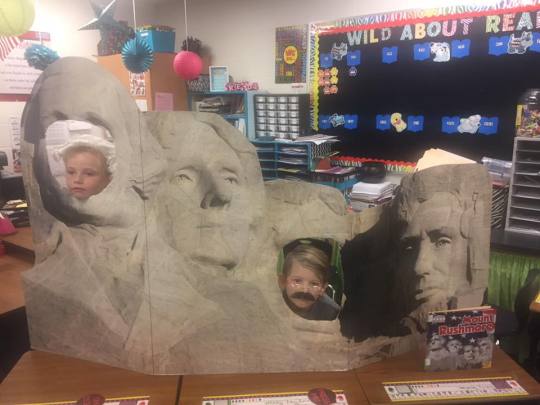
Shannon has taught for 15 years in the Dallas and Oklahoma City Metro Areas. Her recent accomplishments include winning the Moore Public Schools PTA Pat Henry Award and being a nominee for the South OKC Chamber Teacher of the Year Award.
#FFTFellow#US history#US landmarks#US monuments#SSchat#teacher grant#teacher learning#teacher fellowship#Washington DC#Boston#Philadelphia#Fund for Teachers
1 note
·
View note
Photo
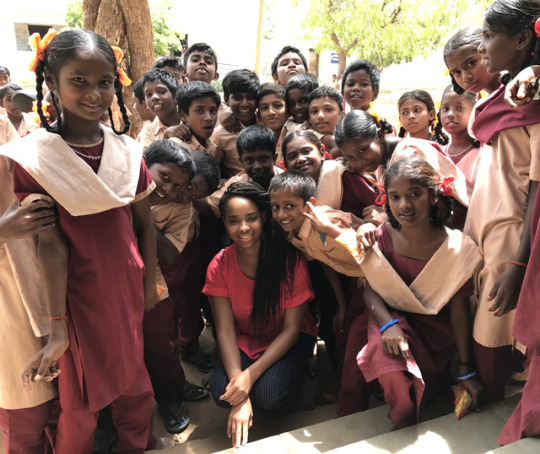
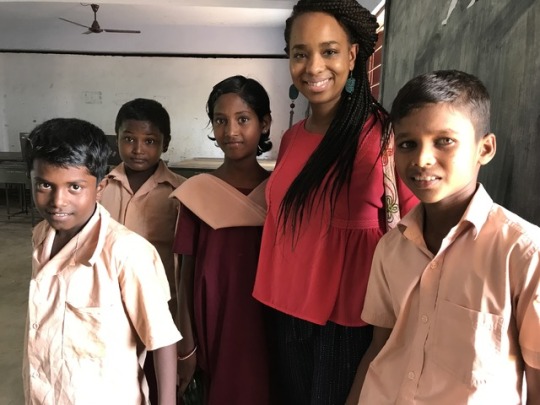
Researching Human Rights Education Where Gandhi Pursued It
by Jamilah Pitts | Harlem Village Academy High School - New York, NY
As a product of urban schools and a first-generation college student, I have spent my professional career working to secure and foster better educational opportunities for students of color in urban schools. I have spent the past four years working as a high school English teacher in urban schools that serve mostly Latino students and students of African descent. This work is particularly challenging given the low literacy skills that student possess because of their disadvantaged backgrounds. Coming from a similarly impoverished community to that of my students, I do not pity them; rather, I recognize ways in which the lack of role models, poverty, substance abuse and trauma distract students from being able to prioritize school.
I have found solace in lessons and units, like youth participatory action research, human rights education, and social justice – projects that ignite within my students an impetus for learning that did not previously exist. For example, a rhetoric unit I designed this year allows students to apply the skills acquired in to persuade the school and outside community to take action against issues such as police brutality, gang violence, discrimination and bullying against the LGBTQ community and sex trafficking.
To further this work, I designed my Fund for Teachers fellowship to work with People's Watch India, an organization that works with a number of schools throughout the country on how to incorporate human rights education (HRE) in school environments, curricula, governance, and relationships.
I was particularly invested in carrying out this research in India because of the variety of human rights violations and social justice issues that exist in a democratic nation of this size. India, known for its cultural diversity, richness and beauty, is equally known for oppressive caste systems, racism, and discrimination against women and girls.
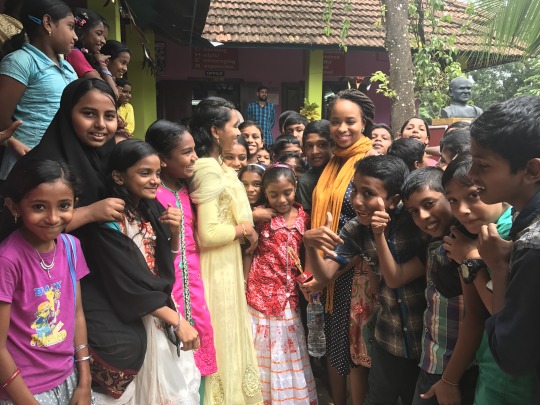
People's Watch works with private (wealthy) and government (poorer schools) alike, and having the ability to study the ways in which this organization partners with schools, administrators and educators to design and implement a HRE program gave me the tools to replicate these practices into my school community.
I prepared for my fellowship by studying the work of Dr. Monisha Bajaj , an Indian-American scholar and professor in the HRE field who originally directed my to Amnesty International as an ideal research location. I then Skyped regularly with People Watch's program director to learn about the organization’s logistics and program operations.
Upon my arrival in Bangalore, I spent the first week undergoing training that exposed me to policies and procedures before spending the remaining two weeks volunteering in two public schools. While Amnesty International operates under a “whole school approach” model that focuses on how to implement human rights into school governance, curriculum, relationships and environment, I focused primarily on gaining tools, resources, and practices around curriculum development.
India, like the United States, is plagued with disparity and inequality, so witnessing how Amnesty International works in schools to interrupt and eradicate existing social ills was invaluable. It is difficult to imagine being able to get an experience of this caliber elsewhere. I learned deeper ways to dive into literature in ways that not only expose the ills that plague characters in the societies in which they live, but also gained tools to do this work on a larger scale within my entire school community. Finally, as an educator who has multiple connections in the field of education (I am a freelance writer for Teaching Tolerance, for example, a member of the Woodrow Wilson Rockefeller Teaching Fellows, a UNCF Education Reform Fellow, and a member of the Institute for the Recruitment of Teachers) I am eager to share this work with other networks of educators who can benefit from the resources that I gained on my fellowship.

After observing implementation of an HRE human rights education in India, I am now teaching a new elective course designed to teach about human rights and how to preserve and promote them. Additionally, my literature students are being exposed to human rights violations and social justice issues through the study of global texts. In designing lessons and units, I am more intentional about incorporating mindfulness and aspects of human rights education into our classroom spaces and will continue to see curriculum, instruction and pedagogy as a means to deliver both content and a vehicle to shape and sharpen character. With my peers, I plan to share this work by inviting them into my classroom and identifying ways to collaborate so they are able to join this work. I also plan to continue writing about and publishing this work in spaces for educators on a broad spectrum. Perhaps most importantly, I will continue to seek out research, resources and ways to integrate larger altruistic beliefs and practices in the classroom.
(Pictured above talking with students in Kerala about human rights education and its impact, and seated at the Taj Mahal.)
While much of Jamilah's professional career as an educator has consisted of working with urban youth, she has also taught in the Dominican Republic and China. Jamilah is an avid traveler, dancer, and writer whose work is threaded by themes of social justice, and human and women's rights advocacy.
#Fund for Teachers#FFTFellow#HRE#human rights#human rights education#Amnesty International#Amnesty International India#India#gandhi#student activists#student activism#social justice#student advocacy#womens rights#teaching tolerance#teach peace#UNCF#teacher leaders#teacher learning#teacher grant#teacher fellowship#mahatma gandhi
0 notes
Photo
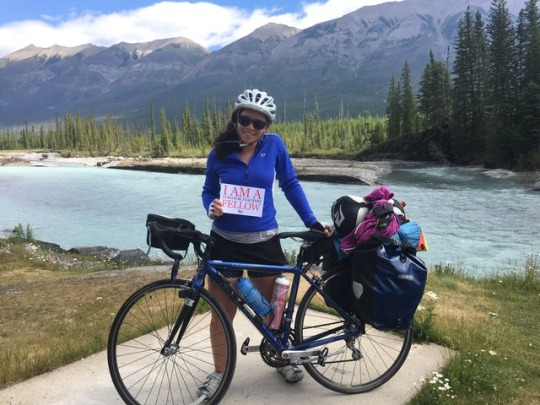


Miles and Miles of Math
by Alyson Parenteau
Science Technology Magnet High School | New London, CT
As a math teacher, the most common question my students ask is, "When am I ever going to use this?" In response, I've organized Making Math Career Connections days, when community members come into the classroom and tell us how they use math in their lives. Engineers, computer scientists, members of the military, medical professionals and business people talk about how they use math in their jobs and industries. However, my students resonate more with people who talk about using math outside of work, in their hobbies and personal interests. When one guest talked about his 3,700 mile cross country bicycle trip, my students were wide eyed and mesmerized. Talk about using math flowed effortlessly as students asked How long the trip was both (in time and miles? How much did it cost? Where did you stay? What did you eat? and What sort of issues did you have?
I enjoy riding my bike and was also inspired by this long adventure, but I didn’t think I was ready for a cross country trek for curriculum’s sake. After I found a bike tour of the Great Parks North with Adventure Cycle Association, I felt like that was something I could tackle and I started my Fund for Teachers proposal to cycle 800 miles from Missoula, MT, to Jasper, Alberta, Canada.
My goal was to create real world math calculations and connections for my students and to model personal growth, perseverance and grit. I wanted to see what other math connections I could discover from the seat of my bicycle. I am a firm believer that math is all around us, we just have to make sure we're looking hard enough.
Looking at the trip route, I was calculating total mileage, daily and average mileage, vertical assent and decent, speed, time to complete the daily ride, the rate I'd likely be traveling and the impact of road grades.
Reading the maps, I applied scale factors and used my compass rose to help figure out where I was and where I was going.
Packing for the trip, I was concerned about the weight of the gear I was carrying translating into a more difficult ride and wanted to make sure I was carry enough ounces of water and electrolyte replacement to stay hydrated.
Pedaling, I was also running numbers with nutrition thinking about my calories consumed and how many calories I was burning.
In the farmland of Montana, as we passed hay bales, I wanted to measure the volume of the cylinders and the rectangular prisms to see if there was a benefit to how they were packed. I pondered how you would then go about calculating the surface area that each bale would cover. I continued to think about geometry in how my bike was designed, the frame made of triangles and how much smaller my bike frame was as a 5' tall person, compared to another rider that's 6' 4". Climbing the Canadian Rockies in the lowest gear of my bicycle chain, most affectionately known as the granny gear, I wanted to go back to my bike mechanic and understand how the cogs work together in the chain ratio to make climbing most efficient. At one point, as we were crossing the continental divide, one of my fellow adventures shared with me their observation that the speed we were going up hill was just under 3 mph, and we could probably walk fast than we were riding.
You really get a lot of time to think when your objective is to pedal six hours in a day. I thought about what we call distance/time graphs in algebra and how we often write a story to describe a situation and have students match a graph and table to the situation. For example:
“Mrs. Parenteau leaves camp at a rate of 13 mph with fresh legs in the morning. She stops for second breakfast at The Greatful Bread for 15 minutes. She gets back on her bike and rides up a big hill, down it and then stops for lunch. She then leisurely rides into camp at a rate of 10 mph.”
The question would match to a graph that increased my distance over time, but with speeds that relate to the story and flat lines where I'm stopped for lunch. Other real life word problems I started thinking about was solving a system of equations where my friend and I travel at different speeds and I might need a head start in order for us to meet for lunch together. All and all, I didn't realize there was so much math involved, but I am so excited to bring it to my students this year!
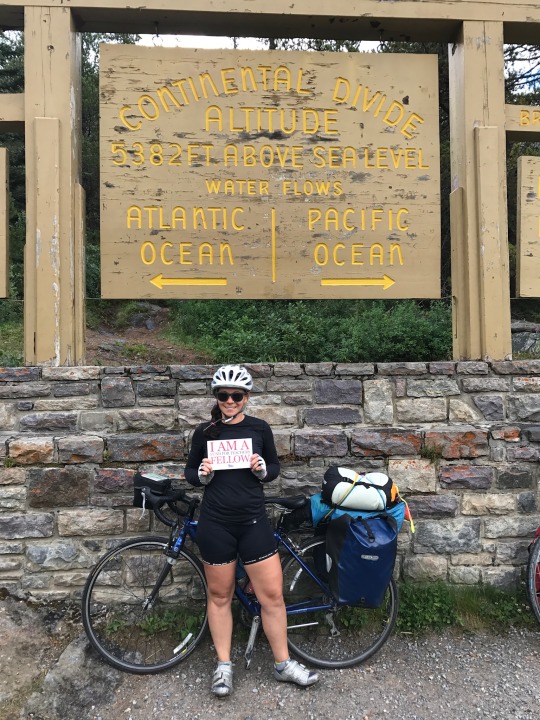
I vividly remember a startling math moment. Our total mileage for the day was 72 miles. I had been riding for several hours and watching the mile markers decrease as we approached our destination. I think the last marker I had seen was something about 40ish miles left to our camp destination. Then, the next marker said 63. I thought to myself, HOW in the world, did I end up going backwards?! Then it dawned on me. I had crossed the Canadian Boarder and things were now in km! From there on out, I was trying to come up with the best way to mentally convert between km and miles.
In addition to the math connections, my project had another purpose -- to be an example for my students to step out of their comfort zones, embrace challenge and struggle productively. I had never camped before this fellowship and my longest bike ride was 150 miles in two days. Yet, on this fellowship I camped for three weeks, including a couple days of rustic camping, without flushing toilets or access to a shower. I adapted to a new pace, literally traveling through life slower than one is used to in a car. From the seat of my bike, the mountains, glaciers and lakes took my breath away; majestic and beautiful -- like nothing I had ever seen. I truly think you take it all in better from your bike than a car.
My sense of accomplishment pedaling into the Columbia Icefields on our second-to-last day was all the more overwhelming having persevered through prior “valleys.” Many times (such as when walking would have been faster than biking) my self talk sounded like: "You just have to go a little bit further. Just keep pedaling. t doesn't matter how fast you go, each pedal is progress in the right direction. I can do this!" This is the same self talk I want my students to have in and out of the classroom.
Recently, growth mindset has become a buzz word in education. I started this year teaching my students about growth mindset, doing activities to see what they would do if they knew the wouldn't fail, setting goals, looking at brain development studies and seeing the benefits of making mistakes and learning from them. Yes, this mindset -- and my fellowship -- totally apply to the math classroom, and also to extracurricular activities and life in general. I believe that by cycling 800 miles in three weeks on a fellowship I designed and pursued, I set an example that encourages my students to take risks. It's in that stretch zone that we start to grow.

Alyson is a middle school mathematics teacher in New London, CT. She is part of the innovative Teach to One team, where students receive an individualized, multi-modality math education. Alyson believes in creating experiential learning opportunities for her students, including field trips, conferences, after school activities and community partnerships.
#FFTFellow#Fund for Teachers#fundforteachers#teach to one#mathed#STEM#biking#cycling#growth mindset#NSTA#mathematics#middle school math#profdev#teacher leader#fellowship#teacher grant#teacher learning
0 notes
Photo
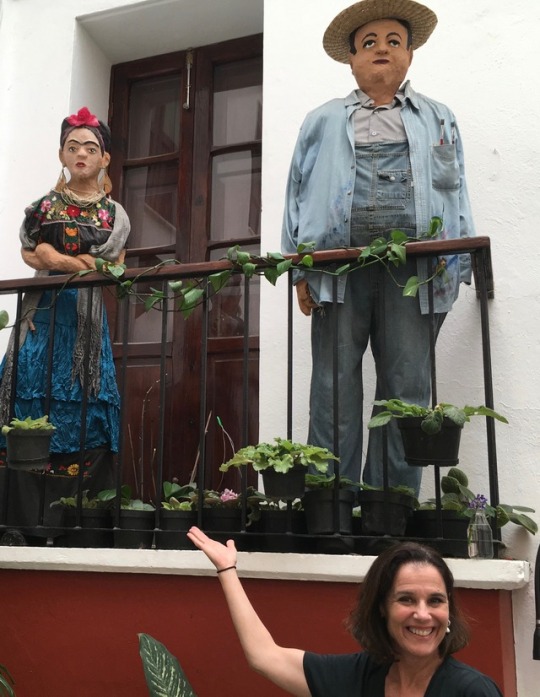

Introducing Mexican Arts into a Cultural No Man’s Land
As Hispanic Heritage Month draws to a close, we share the fellowship of Jeannie O’Meara, teacher at Saint Adalbert Elementary School in South Bend, IN. With her Fund for Teachers grant, Jeannie completed a Spanish Language Immersion Program at Academia Hispano Americano in San Miguel de Allende, Mexico, to inspire, resonate with and teach the arts with an emphasis on Mexican culture in an urban PreK-8th school comprised of a 96% Latino population. Her fellowship came full circle last weekend, as she shares below...
Saint Adalbert Elementary is a preK-8 school that serves the highest concentration of minority students in a city of 100,000 and, as of three years ago when I started teaching there, our school had no formal visual or performing arts program. My principal succinctly described the students during my initial interview, saying, “They are in a cultural no man’s land. They know very little about their Mexican culture and very little about their U.S. culture. Neither their English nor Spanish is fluent.” I chose to design my Fund for Teachers fellowship to address these cultural and academic gaps.
My Spanish language instruction prior to the fellowship was limited to exchanges with the preK teachers aide. Therefore, I spent one month last summer at the Academia Hispano Americano learning basics of the language, as well as Mexican folk art, singing and dancing. My goal was to better inspire, relate to and teach my wonderful students who grew up in poverty, yet display exceptional natural gifts in the visual and performing arts. In addition to attending daily classes and the Folk Singing and Dancing Workshop, I absorbed Mexican culture through visiting galleries, museums, plazas, restaurants, churches, festivals and ruins, including gallery of Fabrica la aurora, Galeria Atotonilco, the ruins of Canada de la Virgen, the Parraquia de San Miguel Arcangel and the Fiesta de la Virgen del Carmen.

(pictured with her teacher, Jorge, and the school director, Paulina)
My knowledge of Spanish improved exponentially on my fellowship. Although still a beginner, I am able to speak with people who only speak Spanish, as well as write and read the language. Equally as important, my instructional practice has had a paradigm shift. While trying to soak in the new people, language, culture, environment, I couldn't help but empathize with my students who are in a very similar situation, but in reverse. They are in the US learning English, and, at the same time, learning a new culture. It is truly humbling! I am now far more patient with my students and brought back a sense of humor to the classroom -- just as my wonderful instructor, Jessika, did for me!
Last week for our school’s Fundraiser/Art Auction, my sixth graders created “Corazon” piece above, inspired by the gorgeous art I saw in Mexico. Seeing their work and learning was a profound step in my ongoing journey to establish credibility and authenticity with my students and families, increase respect for the values of different cultures in the school community, and deepen my personal sensitivity.
In addition to teaching, Jeannie has served as artistic director and founder of a 501(c)(3) musical theatre in Seattle, Washington. For more than 30 years, she has inspired youth in music, drama and art and has led hundreds of youth from audition to theatrical performances. In addition to her Visual and Performing Arts background, she has enjoyed producing television shows for a local PBS affiliate.
#FFTFellow#Fund for Teachers#fundforteachers#profdev#ESL#ArtsEd#multiculturalism#hispanic heritage month#teacher grant#fellowship#teacher leader#teacher learning#san miguel de allende#world languages
0 notes
Photo

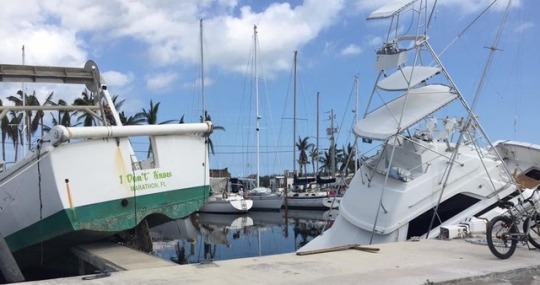
In 2014, Mike Monteleone (Delsea High School - Franklinville, NJ) used his Fund for Teachers grant to conduct marine biology, ecology and marine research in the Florida Keys. He took the time to share his thoughts on that experience, its impact on students and Hurricane Irma’s role in demonstrating how science is a verb.
My wife and I were students at the University of Miami in 1992 when Hurricane Andrew hit south Florida. We witnessed first-hand the destruction to structures and the environment. It took literally years to clear hurricane debris from many areas. Hurricane Irma was an entirely different beast of a storm and while not there for the aftermath, we have friends and relatives in southwest Florida and the Keys giving us information. Many people remain without power and the damage is much more extensive than with Andrew.
I was awarded my fellowship in 2014 for a marine ecological field study in the lower Florida Keys. In fact, we stayed and studied between mile markers 20-22 -- Ground Zero for Hurricane Irma. One of the major realizations I took from our studies was how fragile and integral coastal marine habitats are for the sustainability of ecosystems – both local and offshore. Many areas are already under pressure from human activities, pollution, development and over fishing / harvesting. A natural disaster as extensive and devastating as Irma will undoubtedly have major implications now and for decades to come. In the case of the Key deer, their only habitat – Big Pine Key – has been decimated and this already endangered subspecies may be lost forever.

(photo courtesy of the US Fish & Wildlife Service)
Ecology and human impacts on the environment are already hugely important aspects of the Biology curriculum I teach, but as I strive to prepare students to be smarter global citizens, the impact of natural disasters consumes an increasingly significant portion of our discussions.
The students in my district for the most part are very limited as far as their experiences outside of their hometown, due in part to the demographics of the surrounding community (rural, with few parents being college educated). Therefore, seeing footage of me collecting data in what ended up being Ground Zero of the largest hurricane to hit the United States gives them a glimpse of life beyond the city limits and aids their understanding about how science is DONE. Undoubtedly this will inspire some to want to further their education so that they too can one day participate in a similar research study.
I am very anxious (and frightened) to return to the lower Keys this summer to survey the damage – both above and below the water. Many delicate sea grass flats, coral structures, and sponge communities are most likely destroyed and the effects on invertebrate and vertebrate populations will be significant for years to come. The human toll is of course horrific, but south Floridians are strong and they will rebuild. It saddens me deeply to think how this magnificent and environmentally influential area will suffer due to Irma.
Mike graduated from the University of Miami with a degree in Marine Biology and continued there for partial fulfillment of M.D./Ph.D. requirements. He earned his Masters in Ecological Science from Rutgers University in 2016 and has taught Honors/AP Biology and Anatomy & Physiology in southern New Jersey for the past 17 years.
#FFTFellow#Fund for Teachers#fundforteachers#marine biology#NSTA#STEM#Florida Keys#Marathon Key#Key Deer#Conservation#environmentalism#Hurricane Irma#ground zero#SciChat#teacher grant#profdev#teacher leader#teacher learning#us fish and wildlife service
0 notes
Photo
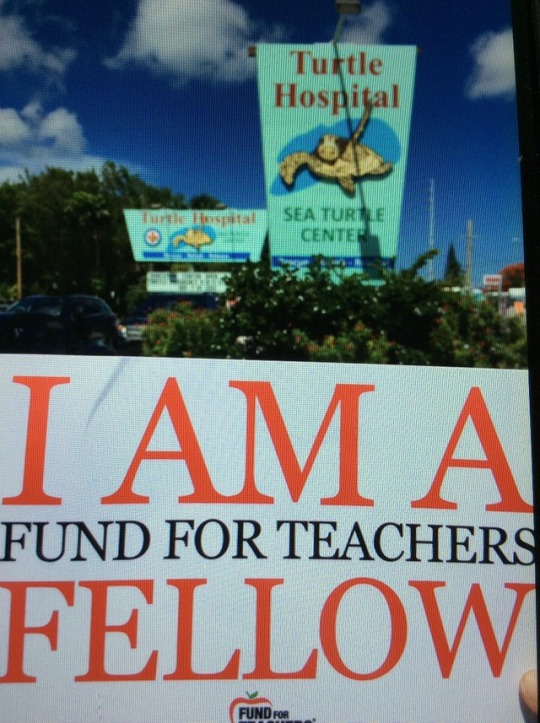

Thanks to Suzanne Almon for this account of how her fellowship in the Florida Keys and Hurricane Irma are engaging students at Asian Studies Academy in Hartford, CT. Suzanne used her FFT grant to research the life cycle, habitat and rehabilitation of sea turtles in Florida and the Galapagos Islands to design a first grade, project based learning science unit on animal habitats.
As a first grade teacher in an urban school, I strive to bring learning to life by bringing into the classroom artifacts, books, posters, magazines, pictures and videos. I was so excited to apply for the Fund for Teachers grant, because I knew it would be a great opportunity to bring in another element to enhance my teaching -- making me the primary source! Deciding on what to pursue was simple; I knew instantly I wanted to study sea turtles. I designed my fellowship with a new Sea Turtle unit in mind, a component of our science curriculum that would cover anatomy, natural environment, natural and unnatural issues facing sea turtle survival and rehabilitation. My inspiration during the proposal phase was Gail Gibbons’ book Sea Turtles, a non-fiction book about sea turtles, that includes ways to help keep sea turtles safe.
All around the Keys, there is an awareness to conserve native animals; Key Deer crossing signs, alligator crossing signs, clean up your garbage and no balloons at the beach signs, etc. I was fortunate to witness first hand how sea turtles are nursed back to health through a visit to the Turtle Hospital in Marathon, Florida. The Turtle Hospital is a safe haven for injured and sick sea turtles and also has a museum in their front lobby full of information. The guide introduced me to the different sea turtles that make Florida their home and to the hospital’s marine residents. The hospital has cared for and released more than 1500 sea turtles since its beginning in 1986.
I was also able to do research on Juno Beach, one of the most active sea turtle nesting beaches in the world. I witnessed loggerhead sea turtles coming to shore and laying eggs. It was an amazing experience! These sea turtles are massive and lay about hundred ping-pong sized eggs while in a trance. The Loggerhead Marine Center’s volunteers invited me to observe this life experience and provided an immense amount of information about their Marine Center, Loggerheads, and the beach.
I returned home from my fellowship on August 22 and ten days prior to Hurricane Irma. In preparation for the storm, The Turtle Hospital moved all “patients” to special hurricane tanks to protect from winds and storm surge. All of the Loggerhead Marine Center’s sea turtles were transported to the Georgia Aquarium. Unfortunately, the nests were not so fortunate. It is reported that due to the heavy storms and increased wave action, the sea turtle nests were wiped out, exposing eggs. The Center informed supporters that they would continue to take in injured sea turtles and hatchlings. Since Hurricane Irma, they have re-opened and have received about 200 hatchlings!
Hurricane Irma hit Florida shortly after school started. My heart was full of dread and anticipation; hoping the hurricane would turn east. Entire oceanside roads were wiped out, trailers and boats were flipped, severe flooding and high winds knocked down palm trees and hurled debris everywhere. Eight people died from natural causes and the storm and another 40 have been injured (30 are from Key West) at the time of this writing. Businesses and homes have been destroyed, as well as the beaches. I love the Florida Keys and I know with time, hard work, and love, the Keys will be rejuvenated and better than ever.
When school started, shortly after Irma’s devastating arrival, students from last year streamed into my class, excited to see me and my photos and hear about my sea turtle learning! They and my new students could not believe that I saw sea turtles and even swam with them! They were so excited to see my videos and especially enjoyed seeing me feeding the sea turtles at the Turtle Hospital and watching them snort water out their noses.
As of today, the building remains closed due to substantial amount of damage in Marathon and the Florida Keys; however, our sea turtle unit is in full swing. Students are watching my interviews with marine biology professionals, as well as my snorkeling in the marine reserves. They are developing writing skills and integrating art into their own non-fiction texts about sea turtles, similar to Gail Gibbons’ exemplar; eventually, they will turn the texts into presentations for their peers at a school assembly.
Lastly, we are scheduling a field trip to our own beach habitat. In conjunction with the Connecticut Department of Energy and Environmental Protection (CT DEEP), students will replicate the experiential learning on my fellowship to learn how they can help sea turtles in Connecticut.
In addition to the Florida Keys, Suzanne also researched sea turtles in Myrtle Beach, GA, and the Galapagos Islands on her fellowship. Suzanne started teaching preschool 2001 and has taught in Hartford for 11 years and was recognized as Teacher of the Year in 2011. Shestrives to build competent and confident learners to be successful and have positive influences in the world.
#FFTFellow#fund for teachers#teacher grant#teacher fellowship#profdev#teacher learning#sea turtles#marine conservation#marine biology#scichat#NSTA#Gail Gibbons#Florida Keys#Turtle Hospital#Loggerheads#CT DEEP#environmental protection
0 notes
Photo
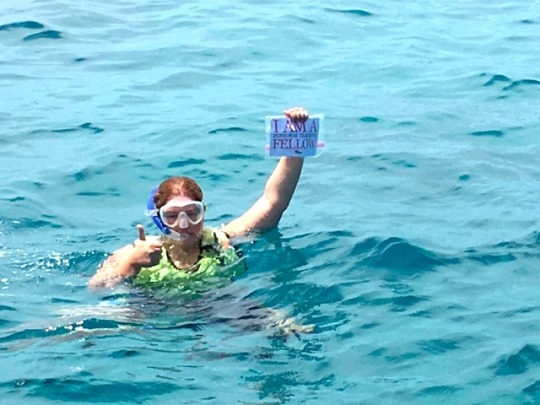
Fund for Teachers grant recipients regularly head to the Florida Keys to research marine biology and conservation; therefore, we wanted to get their insight into Hurricane Irma’s devastation. We are grateful to Lucila Telesco (Newfield Elementary School - Stamford, CT) who, in the midst of Open House - for which she was organizing translators and buses - shared her story...
Heartfelt Recollections of Florida’s Tropical Wilderness
I embarked on my fellowship to Florida’s Everglades and the Key’s Coral Reef during the peak of summer vacation, which happened to coincide with Florida’s wet season. Though I, a fair-skinned northeasterner, had mentally prepared myself to contend with the Florida’s notorious heat and humidity, I didn’t fully understand how unpredictable the wet season could be.
The first stop on my journey was the Everglades, a place I had always pictured as an expansive swampy grassland teeming with scaly alligators. While partly true, I came to see that the Everglades are so much more than that. On my first Everglade adventure, a boat assisted kayak eco-tour of Ten Thousand Islands, the Everglades revealed itself to be a proliferation of magical salt dwelling mangrove trees extending endlessly into the Gulf. My savvy naturalist guide navigated our small boat through the labyrinth of mangroves in Chokoloskee Bay, while explaining the area’s wonders. I learned that the Everglades are home to the one of the largest mangrove ecosystems in the world and the Ten Thousand Islands are comprised of three types of mangroves: red, white, and black; red being most prevalent. As our boat inched closer to a cluster of densely packed mangroves, I got my first glimpse of the red mangroves’ prop root system. The network of overlapping roots seemed to jut out of the water like clumsy acrobats on stilts. As we glided along, my eyes were drawn to the hundreds of seedpods, called propagules, dangling from the branches. I learned that propagules are buoyant and can stay afloat for over a year before they taking root, how incredible it that? Those hardy mangroves were captivating. They had found a way to thrive in the most inhospitable of places.

During my excursion, we anchored in an inlet to explore a sandbar connecting Lumbar and Rabbit Key by kayak. But, no less than 50 yards out the weather turned. Pavilion Key in the distance, which had been visible just minutes before, was enveloped by a dark grey fog. Before I knew it, we were caught in a deluge. My guide, fearful that lighting and thunder might follow the rainstorm, quickly led the way back to the boat. As if on cue, the moment we ambled into boat the sky dried up and returned to its stately shade of blue. It was baffling to see a storm build and subside that quickly. My guide pointed out some large fluffy clouds on opposite ends of the sky and began explaining that though they looked harmless, they had the potential to merge into a serious thunderstorm. Luckily the skies remained clear for the rest of the afternoon, allowing me to explore the sandbar thoroughly. I examined conch and lightning shells up close, and I even learned how to identify sea turtles tracks in the sand to locate their nest. By the end of my time in the Everglades, I had caught glimpses of blue herons, snowy egrets, white ibis’, ospreys, a hungry pair of dolphins, and the fleeting muzzle of a shy manatee, all of which was quite remarkable.

The next stop on my journey was Marathon Key to learn about dolphin and sea turtle conservation. I was set to drive down to Marathon when Tropical Storm Emily made landfall. But, I had places to go and dolphins and sea turtles to see, so I cautiously made my way to Marathon that day. The drive was slow and the rain was relentless, but I arrived safely and in time to see the amazing work being done at Dolphin Connection. As part of the dolphin smart wild dolphin conservation program, they rescue dolphins that have been kept in captivity and can no longer hunt, providing them with food, shelter, and training. Similarly, the Sea Turtle Hospital works to rescue, rehab, and whenever possible release sea turtles back into the wild. They have helped hundreds of sea turtles return to the wild, but the ones whose injuries are too severe to successfully survive in the wild become permanent residents of the hospital. I learned of one such injury that has been endearingly termed bubble butt syndrome. In these cases, the turtles’ shells are damaged by boat impacts, causing them to develop air pockets that render them permanently buoyant, which is a problematic state for a sea turtle that must dive for food. Researchers have attempted weighing down the shells, but since sea turtles shed the scales on their shells periodically, weights are not a permanent solution. Until we can learn to co-exist safely together, I am thankful for organizations like this that are working to protect these animals and their unique habitats.

The final stop on my journey was the Florida Keys National Marine Sanctuary, home to the third largest barrier reef in the world. The chance to snorkel in the blue waters off the coast of Key West [pictured above] and see the vibrant array of coral and fish dancing beneath the surface of the water was unforgettable. It was like a whole little universe onto itself, unawares of the goings on in the terrestrial world. The coral ebbed and flowed as if it has never been rushed a day in its life and a school of vibrant blue fish assembled and dispersed with the agility of Olympians. I learned that the corals iridescent quality is a result of bioluminescence, a chemical reaction that releases light, which many fish also possess. Bioluminescence, much like a school of fish, is employed to appear more threatening and ward off predators. Some corals can even release luminescent particles with toxins when touched. Luckily, my guide thoroughly warned me not to touch anything before the snorkel, so I didn’t get to experience the luminescent toxin. But, the sights I did get to experience were incredible.
Another highlight of Key West was the Butterfly and Nature Conservatory. While there I overheard a little boy’s reaction, which I feel sums up the experience best. He said, “Mommy, I feel like I’m in a Disney movie and I don’t want to leave,” which is how I felt too at the end of my visit. Blue monarch butterflies fluttered about in groups and stopped momentarily to feed on honey and fruits, while bright pink flamingos bobbed in a shallow stream. A turaco, with a bright green crest on the top of it head that resembled a mohawk, was perched in a tree making a ruckus. Even though I was in a glass enclosed climate controlled conservatory, it felt like the middle of a magical forest, capable of producing Snow White and the seven dwarfs around the next bend. Key West is one of the most vibrant and colorful places I have ever visited, and turned out to be the perfect culmination to an extraordinary fellowship.

So, it is with a heavy heart that I learned the Keys and South West Florida were among the most devastated by Hurricane Irma. I want to remember it as it was, thriving, chock full of passionate people dedicating their lives to protecting and restoring it. In aftermath of the hurricane, I was relieved to hear stories of hope from the many remarkable people and places I visited. I learned my Everglades guide is safe and unfazed by the blackout. The staff and dolphins of Dolphin Connection in Marathon Key were safely evacuated to facility in Orlando prior to Irma and are glad to report their dolphin lagoon survived the worst of the hurricane. The Sea Turtle Hospital is operational. Its staff and recuperating turtles also weathered the storm successfully, and they are already admitting new patients. As if by miracle, the glass enclosed Butterfly and Nature Conservatory in Key West was untouched by Irma. If I learned anything on my fellowship it is this: plants and animals possess an incredible ability to adapt to their environments. Hurricane Irma showed me that people do, too. They were all tested, but remain, and like the resolute mangroves are determined to thrive in the most inhospitable of places.
Lucila is an ESL teacher with a passion for conservation. In addition to Masters degrees in TESOL and Reading Instruction, her accomplishments include: Presidential Arts Scholar and member of the Arts and Cultural Cohort of the Women's Leadership Program at George Washington University. In the future, she hopes to combine her love of nature, storytelling and languages to pen a multicultural children's book.
#FFTFellow#Fund for Teachers#Irma#dolphin connection#dolphin habitat#Floriday Keys#Marathon Key#sea turtles#sea turtle hospital#key west#hurricane irma#marine biology#teacher leader#nsta#coral restoration#conservation#presidential arts scholar#tesol#ESL
0 notes
Photo
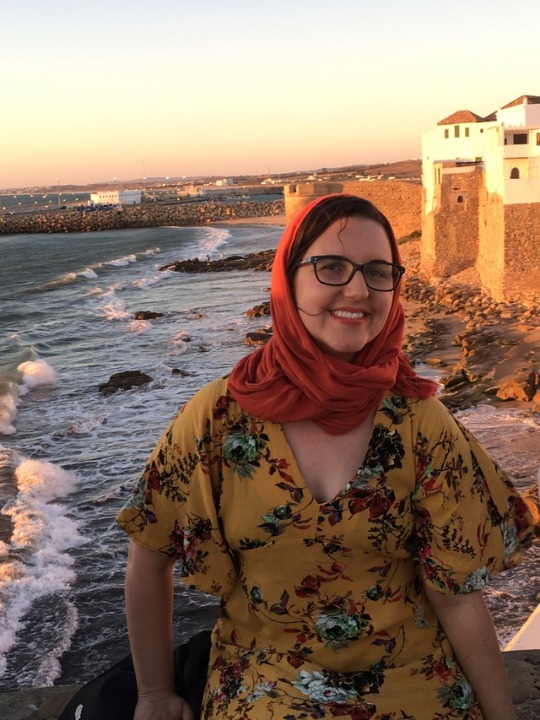

Reflecting on Education Post-911
America’s teachers were among the first responders on September 11, instantly becoming students’ source of information and calm. In the years following the tragedy, multiple teachers have turned to Fund for Teachers for grants to develop strategies and resources that help students process what happened and also provide context for those not yet born when the planes flew into the World Trade Center. One such FFT Fellow is Julie Gallegos, teacher at Bret Harte Middle School in Oakland, CA. This summer, she spent one month in Morocco participating in an intensive Arabic language course and visiting sites of historical and cultural significance to create curriculum that promotes understanding of Islam among Muslim and non-Muslim students.
As a teacher and instructional leader in a diverse middle school program for recently arrived immigrant students, all of Julie’s students are English Language Learners. Despite a growing number of students arriving from Arabic speaking countries, the school had no classroom teachers who spoke the language or had even studied the Islamic culture.
“I am passionate about being an advocate for my immigrant students and their families,” said Julie. “I already had an understanding and knowledge of Spanish and Latino cultures, which prepared me to be a culturally-informed educator for students of this background. However, considering the current political climate regarding Muslims and immigration, I felt it was critical for me to be informed and ready to speak and act on behalf of our Muslim students.”
Julie chose Morocco as her fellowship destination due to its rich and diverse history, as well as a large number of religious and culturally-significant Islamic sites. (Morocco is also one of the few Islamic countries for which the US State Department has not issued travel advisories.) For two weeks, she enrolled in Dar Loughat, a language institute in Tetouan, where she spent mornings in language classes and afternoons and weekends joining excursions to local cultural and religious sites. Her experience also included a homestay with a local family. Julie joined a 14-day guided tour of Morocco for the second half of her fellowship, filming mosques, universities, museums and, especially, interviews with people in large cities and small villages to inform lessons for students and professional development for colleagues.
“What struck me most about Morocco is how peacefully different cultures and religions of people are living together. In the city of Tetouan, Muslims, Christians, and Jews live together in close quarters as neighbors and consider each other brothers and sisters. The people I met connected with each other through their common humanity and didn’t view religious or cultural differences as a barrier. Witnessing this type of human connection inspired me to plan team-building and cultural exchange opportunities for my students to help them better connect with and understand each other.
Julie plans to use her new experiences and insights not only in her classroom, but also in supporting her role as liaison with the school’s Family Resource Center, which facilitates the intake process for new students. She believes her new, basic knowledge of even simple Arabic phrases will indicate to families that the school community cares about all students and that teachers are making an effort to understand their cultures.
Additionally, as an instructional leader at her school, Julie is working to design workshops for her colleagues that discuss implications for teaching Muslim immigrant students and facilitate cross-cultural understanding among the students of diverse backgrounds.
“Studying Islam and Arabic in Morocco allowed me to learn about Islamic cultures, customs, and values and different education systems our students may be coming from so that I can share this knowledge with teachers,” said Julie.”I will design a program to share this information and also address teachers’ questions and misconceptions about our students and their cultures and religion. Overall, my goal is to help lead the staff at my school in being more inclusive and understanding of our Muslim students.”
#FFTFellow#Fund for Teachers#911#9/11 remember#Muslim#islamophobia#world cultures#Morocco#tolerance#religious tolerance#Dar Loughat#arabic#day of remembrance#teach peace#profdev#teacher grant#teacher fellowship#teacher leader#teacher leadership#Oakland USD
1 note
·
View note
Photo

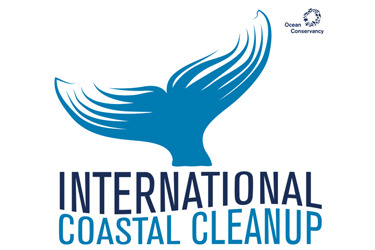
International Coastal Clean Up Day the FFT Way
Saturday, September 16, is International Coastal Clean Up Day, the world’s biggest volunteer effort to protect our oceans. Fund for Teachers Fellow Gina Anderson (Concord Elementary - Bessemer, AL) got a jump on us this summer when she researched the relationship between the Gulf Oil Spill and the economic and environmental effects in the region to establish a STEM unit to design, test and revise solutions for cleaning a polluted environment...
April 2016 marked six years since the Deepwater Horizon oil rig exploded sending billions of barrels of crude oil pouring into the Gulf of Mexico off of the coasts of Louisiana, Mississippi and Alabama. My 5th grade students and I watched live coverage of oil gushing out of the well into the ocean. We saw video of birds, dolphins,fish, sea turtles and other wildlife coated in oil because of the spill. I was on the beach when the first tar ball washed ashore. The experience was very sobering, but gave me a first-hand account of what was about to happen. In the days and months following, the size and number of tar balls that were washed ashore multiplied exponentially. I am able to share my personal experience with students and describe what the tar-balls looked like, felt like and smelled like and bring into my classroom different oils and lubricants to recreate the smell of the air that I experienced, even over a mile inland.
This year I taught a fifth grade Project Based Learning class in all subject areas, and we conducted research to determine the economic and ecological impacts still being felt in the coastal region after six years. During the research, students began to realize that even though this was the largest oil spill into the ocean in history, they could not find answers to a lot of their questions. As they continued searching for answers, they learned that scientists who conducted the research on the ecological effects were not allowed to publish their findings because of continued litigation which made our research difficult. The students still wanted to know:
if the estuaries have rebounded and are now suitable for young;
if the trees that were lost have had an effect on the number of nesting birds such as pelicans and cranes; and,
if the numbers of nesting sea turtles has started to increase in the Mobile Bay and Fort Morgan area.
With my Fund for Teachers grant, I researched these environmental effects as I explored the areas of Bon Secour, Fort Morgan, Mobile Bay and Gulf Shores. I biked the Hugh Branyon Back Country trails, where countless rabbits and alligators could be seen daily prior to the spill. An interview with the owner of Bon Secour Fisheries shed light on the economic and ecological impact of the oyster industry in Alabama and Louisiana. A meeting with Bon Secour National Wildlife Early Restoration Project equipped me with ideas that will help guide students when working on a disaster recovery and restoration project of their own.
The biggest area of professional growth for me resulting from my fellowship is classroom innovation. I discovered that learning is most effective when it is authentic. I was interested in this project because I was there seven years ago when the oil came ashore.This made me take ownership of my learning and, consequently, I did not have to rely on what others thought I should learn. I knew what questions needed asking in order to see the big picture.This removed a ceiling to my learning!
Similarly, I am now going to give students opportunities to complete projects based on their personal interests, also not bound to traditional research avenues such as books or online searches. They will have access to professionals and experts invited into the classroom or via live-stream conferences and interviews in order to make the learning authentic and make those important real-world connections. Three years ago, I began an annual Math and Science night at our school. This is a school-wide event in which we invite stakeholders from the community to set up interactive science and engineering booths where they engage with the students and adults. Each grade level also creates a booth for the students and parents to work on a hands-on activity together. This year, I will have my students oil spill projects on display and they will be able to conduct mock oil spills with their adults.
Around our school community, we have to pay to have trash pickup and pay if we want to use the county landfill. This has resulted in a large problem of illegal dumping of trash on the side of the road. Currently, there have been two volunteer clean-up days. Because of the lack of volunteers attending the events, my students and I will help to promote as well as participate in the event this year, another great opportunity make environmental connections to their oil spill projects.
This fellowship has helped me become more reflective when planning projects. I didn't realize that while I was giving the students an opportunity to conduct research and learn collaboratively I was also putting a cap on their learning by providing too much guidance as far as questioning. I now see the tremendous value of allowing students more autonomy and independence in their research and project designs. My new motto is to let them go where they want to go without restrictions!
Gina is a National Board Certified fifth-grade teacher and was recognized as Teacher of the Year at her previous school. On only seven years of teaching, she is a two-time recipient of the local ABC affiliate’s “Once Class at a Time” grant, as well as a Jefferson County Foundation grant recipient. Gina enjoys being a life-long learner and works diligently to instill this into her students through Project Based Learning.
#FFTFellow#Coastal Clean Up#deepwater horizon#STEM#Marine Biology#SciChat#NSTA#oil spill#project based learning#teacher learning#teacher grant#teacher fellowship
1 note
·
View note
Photo

Rewriting History (Textbooks)
by Melissa Petropoulos | Rowayton Elementary - Norwalk, CT
Earlier this year, my grade level was told by administration to pull our 4th grade Social Studies text books from our shelves, an act affirmed by the United Nations Working Group of Experts on People of African Descent. Why? A section of the text was culturally insensitive and inaccurate about enslaved people in Connecticut, saying something to the effect that Connecticut slave owners treated their slaves like family members. Whenever I came to this page in the book over the past three years, I simply skipped it. I knew that the text trivialized the topic, so I provided alternate information to supplement my students’ understanding of slavery during Colonial America.
Read about the book recall here.
When this book was deemed inappropriate, I reflected on why I skipped over information that I found offensive rather than taking action myself. This consequently led to some honest dialogue with my husband, an eighth grade history teacher, and ideas around slavery became a recurring conversation between the two of us. We discussed ways we could bring the true story of enslaved people into the classroom through primary sources, research and visiting historic sites. Because the issue spans hundreds of years and multiple continents, we decided to narrow our investigation to the context of life during the Colonial period, a subject we both teach. Then we designed a Fund for Teachers fellowship to learn about the people who were enslaved during the Colonial Period in America and how they survived under the despicable injustice of oppression and slavery.
In that erroneous 4th grade history book, slavery was trivialized; yet in existing books we have read, there remains little focus on the dignity of the enslaved Our fellowship goal was to gain insight into the unique social, political and economical conditions in each colony and how those conditions affected the beliefs, cultural experiences and perspectives of enslaved Africans.
Our road tour covered eight states: Connecticut, New York, Maryland, North Carolina, South Carolina, Georgia, Louisiana and Washington DC. We experienced museums, slave markets, historical societies and plantations. We were immersed in a dark history and keeping dry eyes was nearly impossible. Our first site was emotionally the hardest: original slave cabins, a slave pen, and sculptures depicting 23 beheaded slaves who revolted in 1811.
We felt that we knew a lot about slavery in the United States prior to our fellowship, but by being in places where enslaved people walked, touching my finger into the impressions of their fingerprints on bricks they made, standing under the summer sun that once beat down on their work-torn bodies, we began to really comprehend what happened in this country. We learned about craftspeople, what they created, what they built. We learned about resistance, both subtle and overt, as a way of showing disdain for their bondage. Consequently, now - rather than skipping one page in an entire social studies text book devoted to the cause of slavery, we choose to focus on the contributions of the men, women and children who were enslaved. We will teach about the human spirit, the passing of culture and heritage from one generation to the next, the craftsmanship and skill set, the desire for freedom, and the closeness of families. We will teach about daily life of the enslaved and the extraordinary stories that came from our dark past.
We were in Georgia when the riots happened in Charlottesville, VA. Having been immersed in a time period of oppression and racism for 12 days this summer, we were especially offended and disgusted by what we saw. To combat the hate we saw, we plan to celebrate in our curriculum the contributions of African Americans from early America throughout social studies units on regions of the USA. Through research, students will share slideshows or visuals of their findings about the history of slavery from the perspective of the enslaved. These presentations will be told as first person narratives in order to convey the daily life of an individual who was enslaved. I also envision planning a peace or unity rally at my school. October 25 is Unity Day, a day of kindness, acceptance, and inclusion and would be a great opportunity to send a strong message to our students.
Becoming a Fund for Teachers Fellow gave us a feeling that doesn't come along all the time, one of validation. We felt proud that our idea for exploring a topic was funded and that my students would benefit from my vision and learning. I felt like a winner. The euphoria of that recognition has not worn off. Every museum, site, or tour I took, I did so knowing that there was an organization standing behind me, supporting my endeavor. It was a richly rewarding experience.
Melissa has been teaching in her beloved hometown of Norwalk, CT, for 28 years. She has twice been awarded NEF grants for classroom innovations: Other Talents and Pond Study. With a love for science, she established a First Lego League to bring quality STEM to her school and is equally passionate about history, infusing lessons with primary sources and recreating history through dramatics.
James Petropoulos is a product of the Norwalk Public Schools and has been teaching for the Norwalk Public Schools at West Rocks Middle School for the last twenty years. James spent nine years teaching sixth grade Ancient History and for the last eleven years has taught eighth grade American History and Civics for the Norwalk Adult Education Program for the last twenty-five years.
1 note
·
View note
Photo

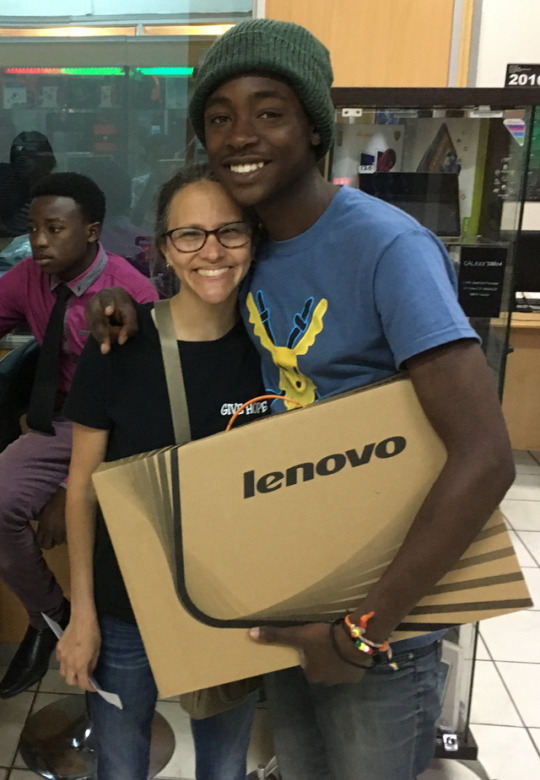
Introducing Struggling Students to Service Learning
Measuring the impact of Fund for Teachers fellowships is tricky. How do you graph the increase in student excitement after their teacher returns full of new ideas and experiences? How do you assess the engagement of students once they realize through their teacher’s experiences the global impact of what they’re learning in class? Most often, the impact is intrinsic and anecdotal, but none the less transformative. Like in the case of Maria Morris.
During the summer of 2016, Maria used her Fund for Teachers grant to investigate the culture, educational system, employment and standards of living in Zimbabwe to improve a service-learning project she initiated with her students with barriers to education at Morse High School in Bath, ME. She split her time exploring community-based volunteer projects through African Impact at Antelope Park, observing four local schools and visiting an orphanage with which her students formed a long-distance relationship.
One year later, Maria checked in to share the impact of her learning in Zimbabwe.
“Just one year ago, I was settling in after a jam packed, whirlwind fellowship to Zimbabwe as a Fund for Teachers Fellow. The purpose of my fellowship was to study the culture, life style economics, employability skills needed and the educational system there. My fellowship actually began two years prior, when I sought out opportunities for my students to learn about a different country. At that time, I established a pen pal project with children living at the Midlands Children Hope Centre, an orphanage for street children, in the city of Gweru. In addition to developing friendships thousands of miles apart, we began charity work to help our friends who were in dire need.
Throughout that first year, it was evident that my students had more questions than answers and those questions inspired my fellowship journey. While in Zim I blogged regularly about my travels, whom I met and what I was learning, but I haven’t sat down to write for a year now. What did my FFT fellowship inspire me to do differently?
It often seems that in our country we look at charity as an agent for social change. Certainly money helps and is necessary, but it isn’t a long term solution. The fruits of my experience on the ground in Zim led me to learn more about social entrepreneurship, micro-finance and small enterprise over the last year. I devoured books like, The Blue Sweater: Bridging the Gap between Rich and Poor in an Interconnected World by Jacqueline Novogratz, and took classes through Acumen. I sought out current event articles to share with my students. All of this helped me guide my students to inspire change through the funding of small enterprise. The JMG students at Morse High School developed the Giving Hope! Grant to fund a revenue generating enterprise for our friends at Midlands Children Hope Centre.
In less than 24 hours a completed grant application was returned to the students requesting $400 to purchase equipment, fertilizers, and seedlings for their garden, which supplies the home with nutritious fresh produce, but also generates revenue. Later on, my students funded an additional grant request for the orphanage to design and purchase t-shirts, caps, and bracelets to sell to the volunteers that visit the orphanage. Staff and youth are mutually invested in both revenue generating projects to defray the operating costs of the home.This venture in providing grants (inspired after the concept of micro-lending) would not have been possible without my Fund for Teachers fellowship. Not only did my trip and experience change and inspire me, it impacted youth on both sides of the globe.”
As a teacher, Maria guides her students through academic, financial and social barriers to prepare them for college and career success. As a mentor, she exposes them to a world beyond their own struggles and empowers them to help others facing equally as challenging circumstances. Hard to quantify that kind of impact, but we’re very proud of how she’s using her grant to change lives on two continents.
In her second career as a high school career preparatory teacher, Maria has found her life's passion in inspiring students to challenge themselves to become their best selves. She blends classroom lessons with authentic learning experiences to empower her students to become healthy and successful global citizens. Maria was inducted into the Maine Educators' Hall of Fame-Starting Six in 2012 and named the 2016 Dr. Patricia Ames Distinguished Teacher Award at Morse High School in recognition of her ability to teach students to be open to new experiences, to care for others, and to act from conviction.
1 note
·
View note
Photo
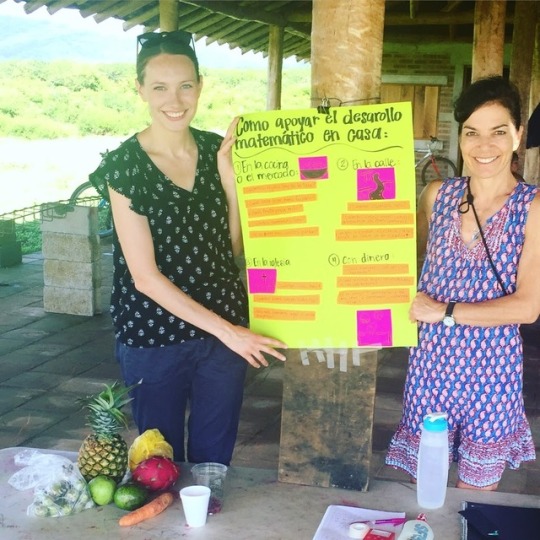
Living La Vida del Profesor
Emily Parkinson | Edison Elementary - Morton Grove, IL
For as long as I’ve wanted to be a teacher, I’ve also wanted to teach abroad, immersed in a culture different from my own. During a particularly stressful experience this past year, it occurred to me that spending my summers abroad could be a perfect way to satisfy that international craving. I want to tell you a little bit about my fellowship living, learning and teaching in Nicaragua and Costa Rica, and the biggest takeaways that I will bring to my practice here in the US.
Around November of last year when I considered applying for a Fund for Teachers grant, I started searching for summer opportunities abroad, specifically in Latin America because a large percentage of my students are Latino and Spanish-speaking. My main goal was to become fluent in Spanish so I could comfortably speak with a parent or translate an individualized education plan (IEP). A Google search led me to a company called Common Ground International, a husband-wife team based in Colorado who lead Spanish immersion trips for teachers, medical professionals and high school students. The ‘Spanish for Educators’ program was perfect for me: living for four weeks in Nicaragua and Costa Rica -- working with local education-related organizations and schools, taking intensive Spanish classes with a focus on education, and living with host families in both countries. I knew this program would push me out of my comfort zone and help me not only become more proficient in Spanish, but also become a more culturally-competent educator.
Nicaragua
My fellowship began in the city of Granada, Nicaragua, a colonial city situated on the coast of Lake Nicaragua. Granada charmed me in every way imaginable, with its pastel colored buildings, bustling Parque Central, and breathtaking horizon filled with volcanoes and church steeples. What I loved most about Granada, however, was the people, including my hospitable host family comprised of three generations.
As for the work I did in Nicaragua, our days were split in half between educational outreach in the mornings and Spanish language classes in the afternoons. During the first week, we worked with an organization called House of Hope, a refuge and safe place for women who have escaped or are still experiencing forced prostitution. House of Hope works with some of the strongest women I will ever encounter in my life, who value their children more than anything but aren’t always comfortable parenting their children due to poor role models. Personally, the idea of being a white American going into another culture and trying to be a savior is something I have a lot of issues with. Who am I to tell these women how to parent, when I don’t even have children of my own? While that is a complicated issue, our program made a point to ask women what kind of support they needed so we could plan workshops that would actually benefit them. We ended up delivering workshops to the mothers about how to involve their children with age-appropriate chores. The women (pictured in a workshop below) were engaged, patient with our sub-par language skills and genuinely grateful for the useful information and resources.

During our second week, we worked with a local school on the outskirts of Granada that serves marginalized neighborhoods or ‘shantytowns.’ For families in these neighborhoods, money is scarce and education is often seen as a way out for their children. The students at the school are excited to learn and see a bright future for themselves. Since students were on break when we were there, we again put on workshops for parents. This time, the theme was more general: how to support your child’s education at home. My partner (Fund for Teachers Fellow Amy Holt from Franklin H. Mayberry Elementary School in East Hartford, CT ) and I focused on math development, and simple ways that parents can reinforce math concepts at home as part of their daily routines like cooking or walking to school. Again, the parents were eager to hear what we had to offer and willing to share their own input on how they talk to their children about math at home.
When not volunteering in the community, I took Spanish classes for four hours each day, focusing on education-specific usage of the language such as how to talk to parents about their child’s progress or how to address student behavior in the classroom. I even learned technical, IEP-related terminology and, by the end of the program, was able to translate an IEP! Goal accomplished!
Overall, Nicaragua left a huge impression on me. Observing people so dedicated to improving the lives of others through education was incredibly inspiring. Parents’ commitment to their children’s education, despite difficult circumstances, was unwavering. The two weeks I spent in Nicaragua went by way too fast, and before I knew it I was hopping on a bus for a nine hour journey to Costa Rica.
Costa Rica
Costa Rica was drastically different from Nicaragua. I think the most emotionally challenging day for me was the day of transition between the two countries. The beautiful landscape I saw out the window was just as enchanting as Nicaragua, but as we entered the cities of San Jose and Heredia, I was struck by the economic differences. From the abundance of American fast food chains to the (relative) lack of stray dogs, to the style of dress, Costa Rica was in a very different situation economically. Overall, the drastic differences in the standard of living between two nations was shocking and tough to process.
The work I did in the community in Costa Rica was different, as well. Instead of working with parents, we spent most of our time working with students, which I was so deeply missing! Getting to interact with kids again, although challenging in my second language, brought me so much joy and energy. I was living in a small city in Heredia called Santo Domingo, a town where people say “hello” on the sidewalk and everyone seems to know each other. We spent our first week putting on an educational day camp for kids in Santo Domingo who were still on break from school. My colleagues and I set up separate learning stations and I decided to teach the kids some of my favorite math games from my own classroom. Their eyes lit up when they found out that they could actually practice math through games (pictured below). I asked if they ever played games in school and they laughed and shook their heads no. One student even got excited about a multiplication chart, something she had never seen before, exclaiming, “Ay, que chiva!!” (“Oh, how cool!”) We played dice and card games, practiced our multiplication facts, listened to the Moana soundtrack in Spanish, and laughed as the kids taught me some new vocabulary. Parting with these kids on the last day proved difficult. (One first grade boy even told us, “These were the best days of my life!”) Luckily, we would be seeing some of them the following week at their school.

Students in Santo Domingo were back in school the following week (my last week in Costa Rica) and we got the opportunity to work in a local public school. I got to assist the ‘Apoyo de Aprendizaje’ teacher (learning support) in her classroom where she worked with students with learning disabilities in small groups. This teacher was absolutely amazing. Everything was made into a game (unlike what students had told me the week before!) and students were so engaged and excited to learn. Overall, this school’s approach to Special Education seemed very effective. I observed a lot of collaboration between the special education teachers and general education teachers, and the school created an inclusive atmosphere, even though students who needed individual attention were serviced in a separate room when necessary.
Biggest Takeaways: Why Will This Matter in My Classroom?
The most important thing for me in this whole experience was developing skills to better equip me to serve my students. Here are a few major takeaways that I believe will make me a better, more culturally-responsive educator:
Knowing how it feels to be an outsider: As a white person in America, my privilege protects me from the emotionally-taxing weight of being an outsider. My students, however, coming largely from minority backgrounds, feel this way every. single. day. It was important for me to have the opportunity to be a cultural outsider, feeling totally insecure in my use of the language and clueless about certain cultural norms. Learning a second language is incredibly difficult, and so many of our students in the US have to do it while we expect them to do so many other things. We expect our immigrant students to adjust seamlessly to the norms of our culture AND keep up with the same expectations as their peers. While I don’t believe in lowering expectations, it is important to be mindful of the emotional toll associated with adjusting to a new language and culture. I now know some of that myself and I will definitely be more sensitive to my students’ needs this year.
Learning that you can’t judge based on one snapshot: This truth something consistently challenged me, both Nicaragua and Costa Rica. I can’t count the number of times that something I had heard about education or culture in one of these countries was debunked. For example, I was told by numerous people (Nicaraguan and North American) that the standard of education is so low in Nicaragua, it’s unlikely to see high quality learning taking place. However, my Spanish teacher in Nicaragua was one of the most highly-skilled educators I‘ve met. Costa Rican adults and children told me how most of their learning is dry, repetitive and focused on rote memorization; yet, I worked alongside a Special Education teacher who made learning a game. I could go on and on about the misconceptions that I encountered, but all in all, I was reminded how important it is to take individual experiences as what they are: individual experiences, rather than a general notion about an entire culture.
The importance of building community: What struck, especially at the local school in Costa Rica, was the family-like support of the community. For example, at recess students ran into the hallways and onto the field for free play without recess monitors! I didn’t see any student excluded, any fights or major issues. Why is it that in my Chicago school with hired recess monitors, we had to cancel recess because of too many unsafe issues? It really got me thinking about cultural differences and our approach to community building and social emotional learning. I sensed the familial love and respect in a classroom the second I walked in, and this is something I will work hard to build in my own classroom this year
Overall, I could not have imagined a more effective and energizing experience abroad, doing what I love most - teaching! My language skills improved drastically in only a few weeks. Most importantly, I met people with whom I will always remain connected, even though we may be many countries away. I am so grateful to Fund for Teachers for allowing me to have this opportunity and I cannot wait to start this school year off better than ever before!
Emily is a Special Education teacher in the Chicago area, educating students in a school with a high concentration of Spanish-speaking students. She is passionate about social-emotional learning and mindfulness in the classroom. Emily is pictured at the top of this post (on the left) with Amy Holt; you can read Amy’s perspective on this same fellowship here.
#Fund for Teachers#FFTFellow#IEP#ESL#ELL#latin america#Chicago Public Schools#fellowship#profdev#teacher grant
0 notes